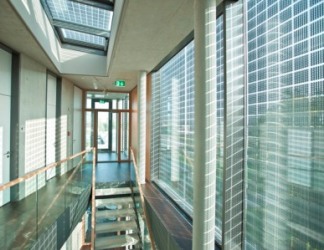New Jersey company installing largest transparent solar roof
 Pharmaceutical company Novartis is installing the largest transparent solar roof in the country on its new corporate headquarters building going up in East Hanover, New Jersey.
Pharmaceutical company Novartis is installing the largest transparent solar roof in the country on its new corporate headquarters building going up in East Hanover, New Jersey.
Architecture firm Rafael Vinoly from New York designed the unique building and contracted with Sunways, a German solar company that specializes in building-integrated photovoltaic applications, for the transparent solar cells that will cover the building’s roof and give an open, sunny feeling while also supplying Novartis with clean and free energy.
This is Sunways’ biggest roof project to date and the only one so far in the United States, said Sunways head of corporate communications Harold Schafer.
“We sell to international projects,” Schafer said, “though most have been in central European countries.”
Sunways uses a special laser process to cut small square holes in its solar cells so they can be integrated into traditional building materials like glass.
Sunways has sold its innovative solar cells to architects all over Europe, where they have been used on roofs and glazing on the sides of buildings.
The company also custom-designs colored solar cells and has used those in building facades. In addition to generating power, the colored cells lend the buildings a modern edge. They don’t immediately scream solar cell when passersby see them. The long elevator shaft covered in emerald green solar cells at one European building looks more like it’s sided with a unique marble than with solar panels.
The panels are about 14.4 percent efficient, according to the company’s marketing materials.
While the Novartis project in New Jersey will be Sunways’ first in the United States, Schafer said there seems to be growing opportunity for the product all over the world.
“Increasingly, energy costs for buildings and the requirements to reduce carbon emissions (will drive business),” he said. “In heavily growing urban regions, there are a lot of building envelopes that may be used for energy production.”



